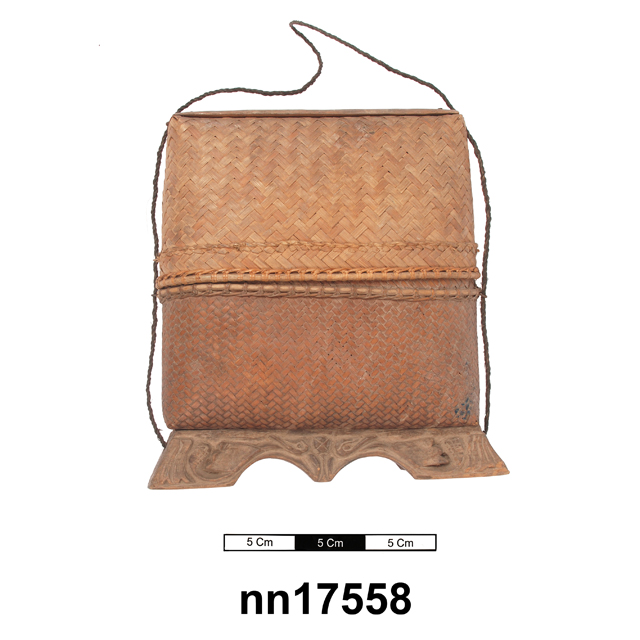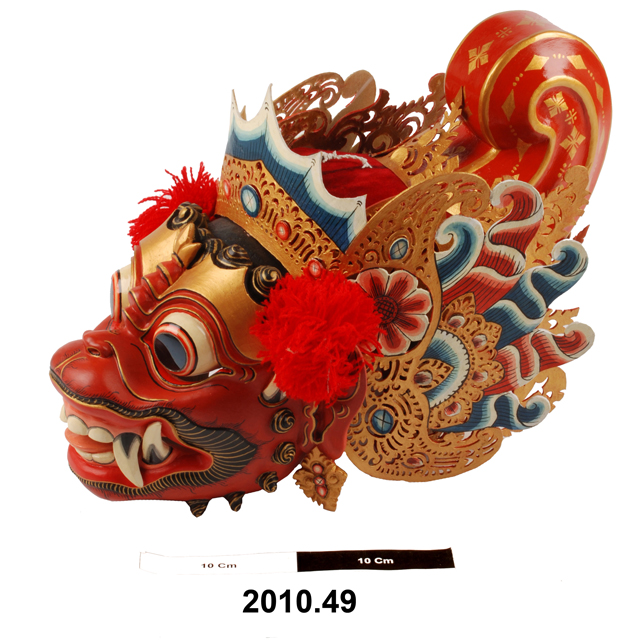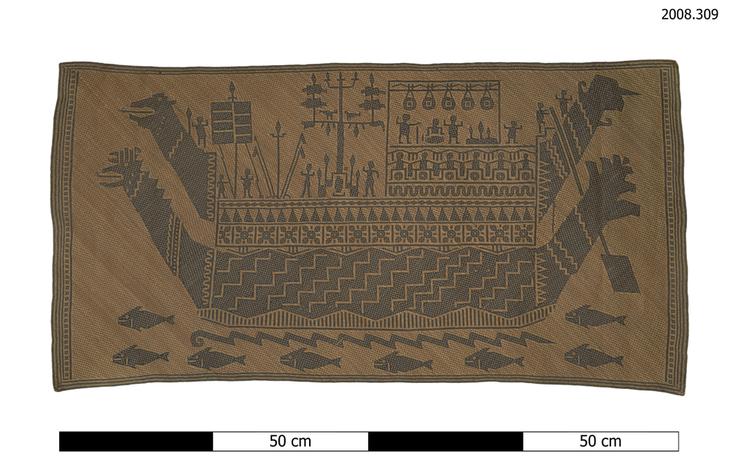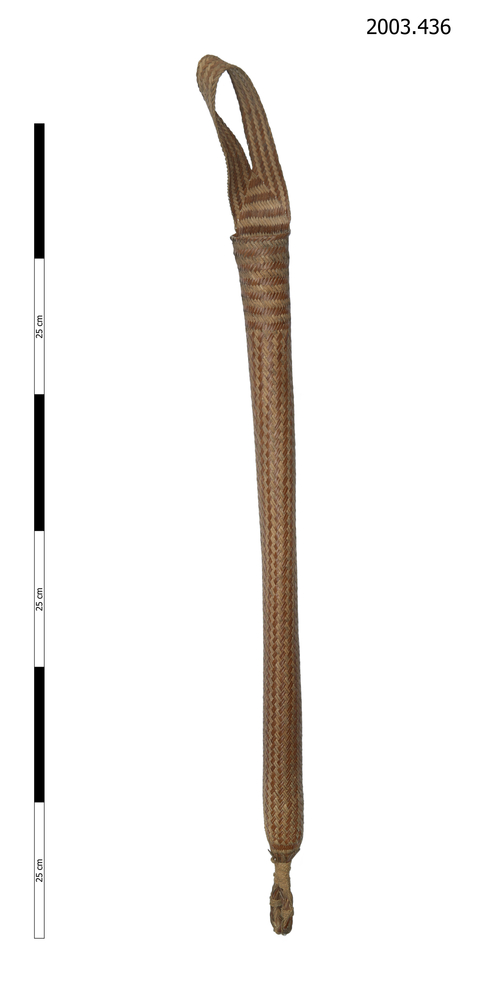
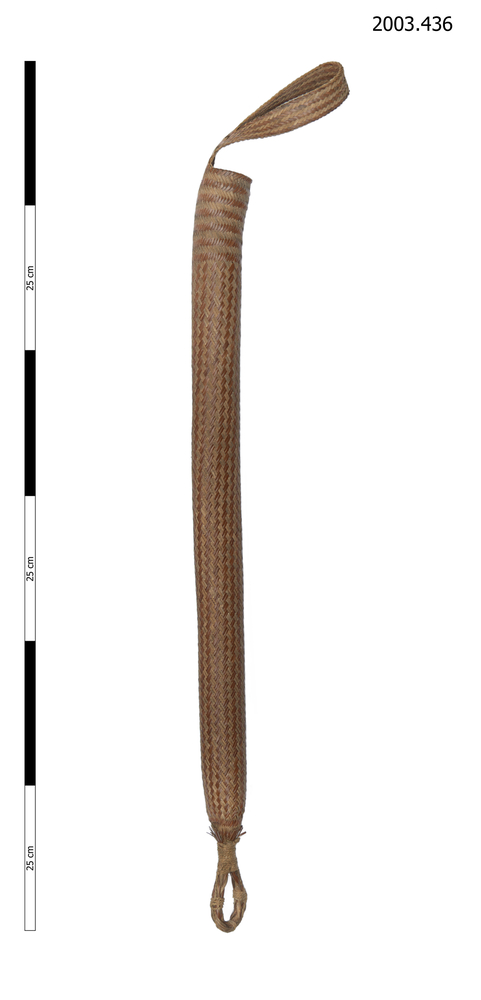
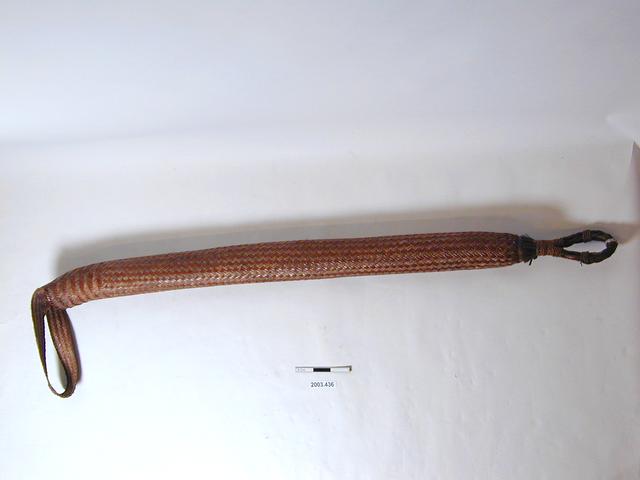
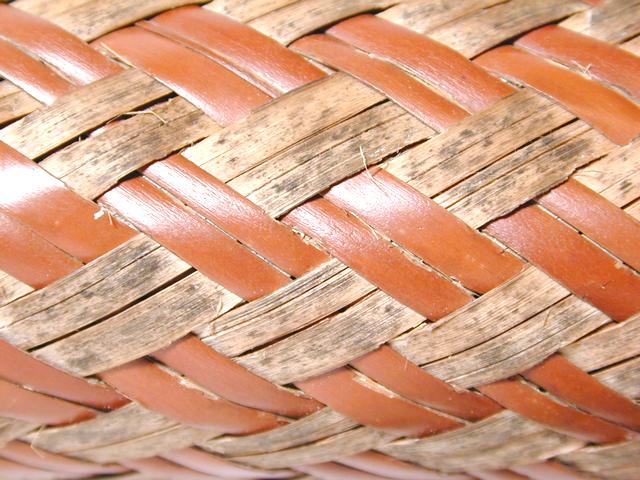
Cassava squeezer. Local name: Matapi or Yuro. A long woven tube with a loop at each end, woven from shiny brown and dull yellow-grey plant fibres in a pattern of small diagonal stripes. The ends of the weaving fibres are bent upwards again at the ends and tied in place with string. The weaving is quite loosely done so that the tube is flexible. The loop at the top goes over the branch of a tree; the one at the bottom slips over a pole. If a person then sits on the pole, the tube is stretched and thus squeezes any cassava inside it so the poisonous juices run out.
Bought from Christiani Oselmo, St. Cuthbert's Mission, Mahaica River, Region 4, Guyana. It was made by Charlotte Oselmo, who was the nephew of the seller. It is woven from the same type of plant fibres other Guyanese Amerindian matapis would be made from (See the Wai Wai squeezers) and it is used to squeeze the poisonous cassava juice out of the manioc or cassava plant that the Arawak and other Amerindians depend on for their subsistence. The matapis of the Amerindians have the same kind of function in different communities but the patterns of the woven artefact may differ from place to place. This particular matapi is stylistically different from the Wai Wai one that is in our collection. The consumption of manioc is one of the few 'truly' pan-Amerindian cultural systems that is still widely practised. Even among the relatively 'modernised' Arawaks of St. Cuthbert's Mission, the consumption of manioc bread and the drinking of its beer still remains a pertinent aspect of the subsistence system.



